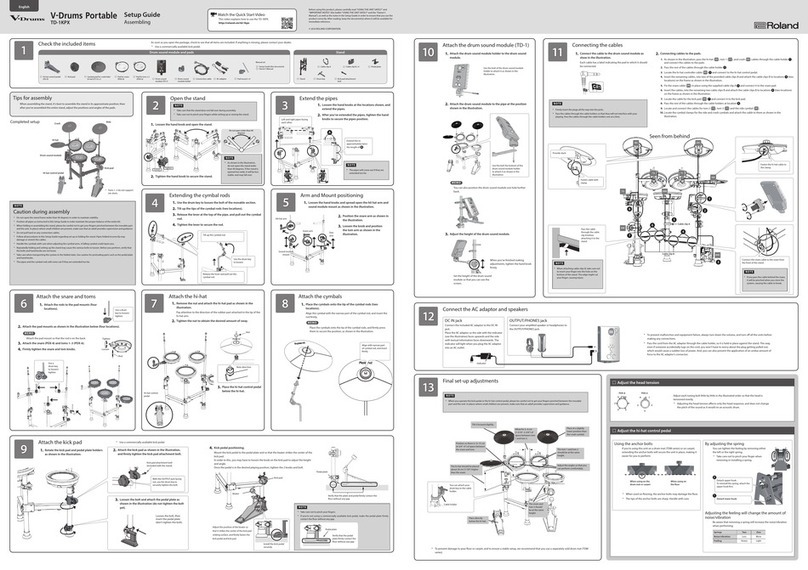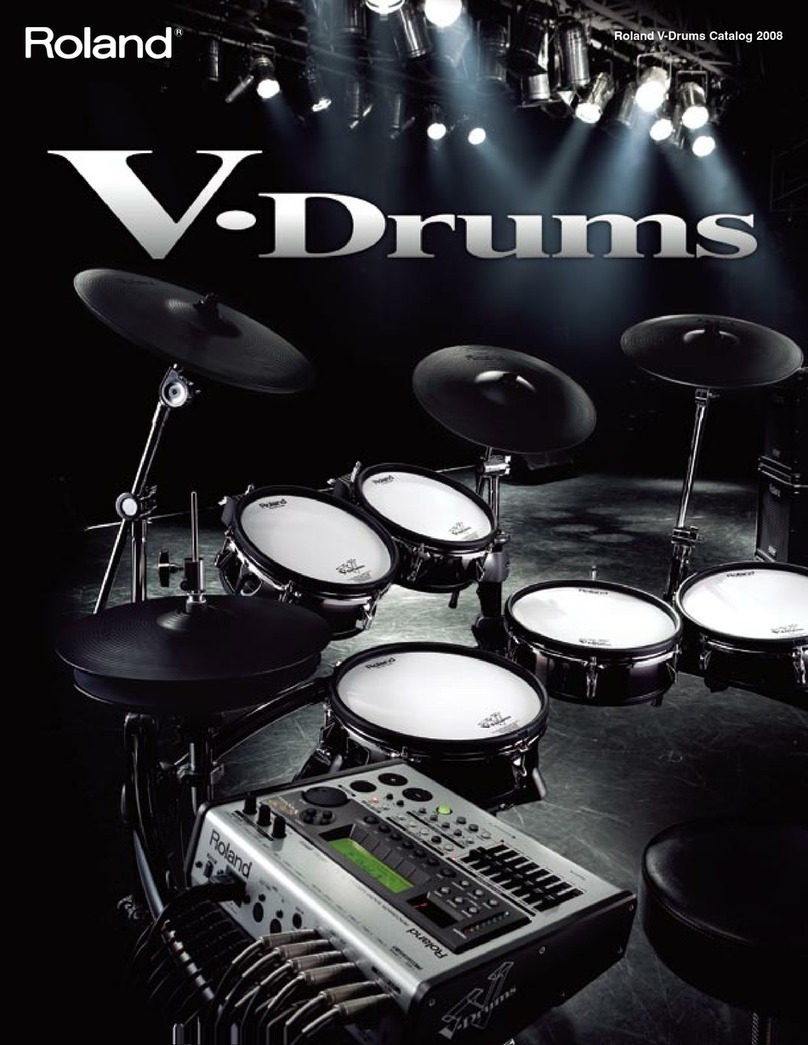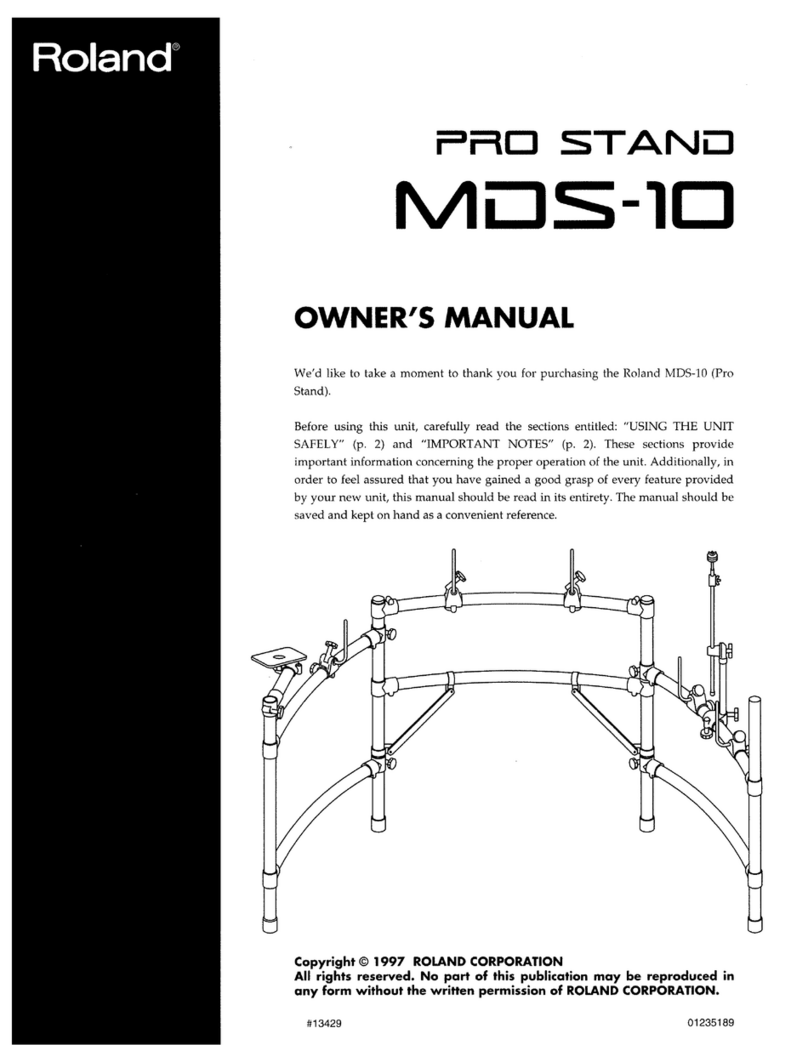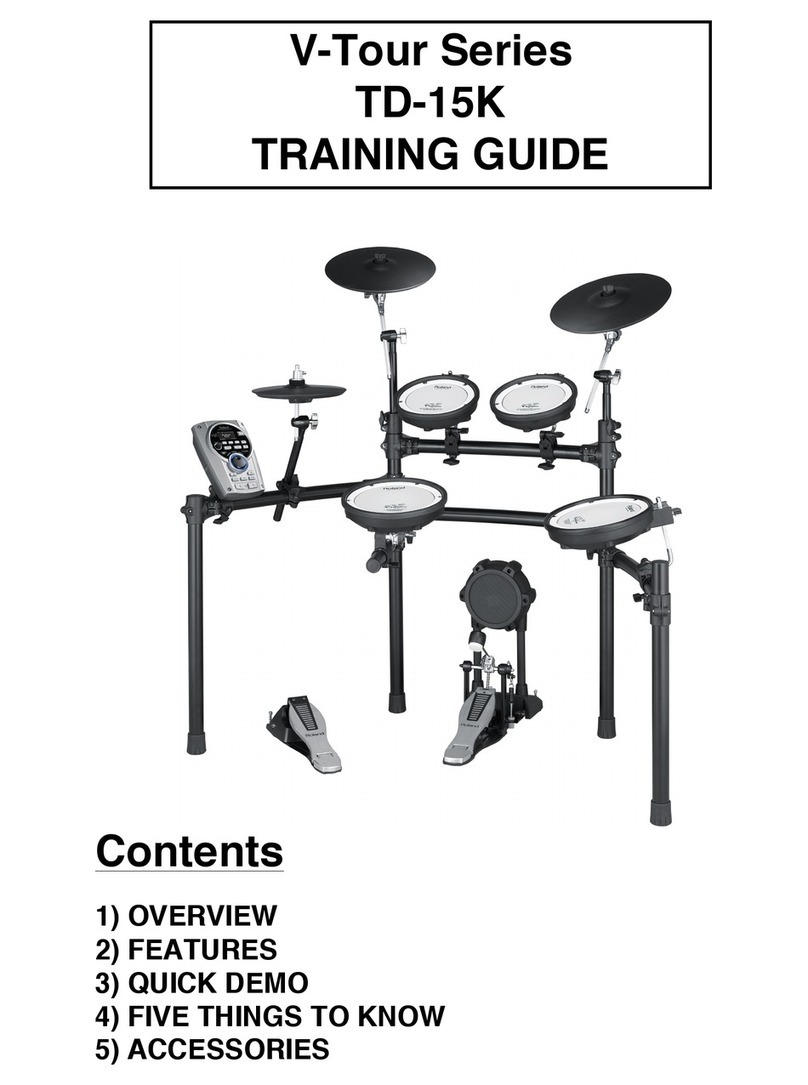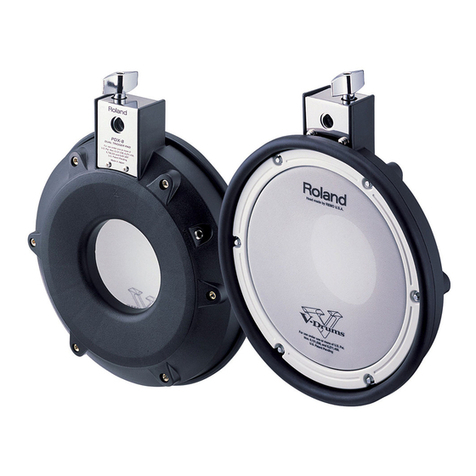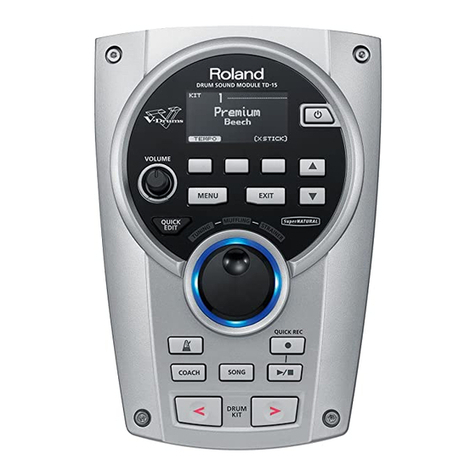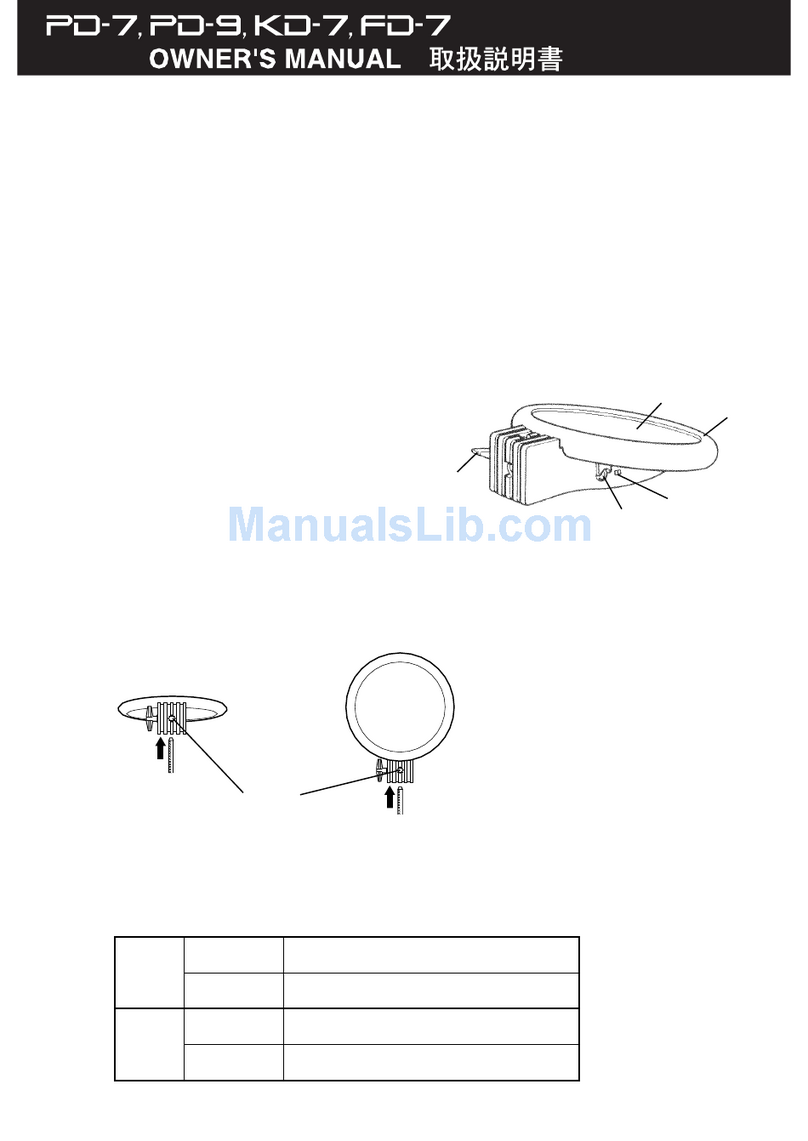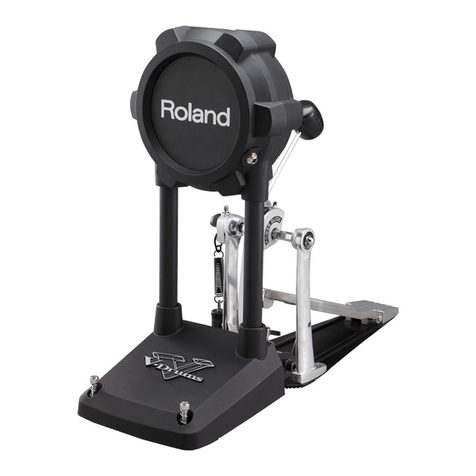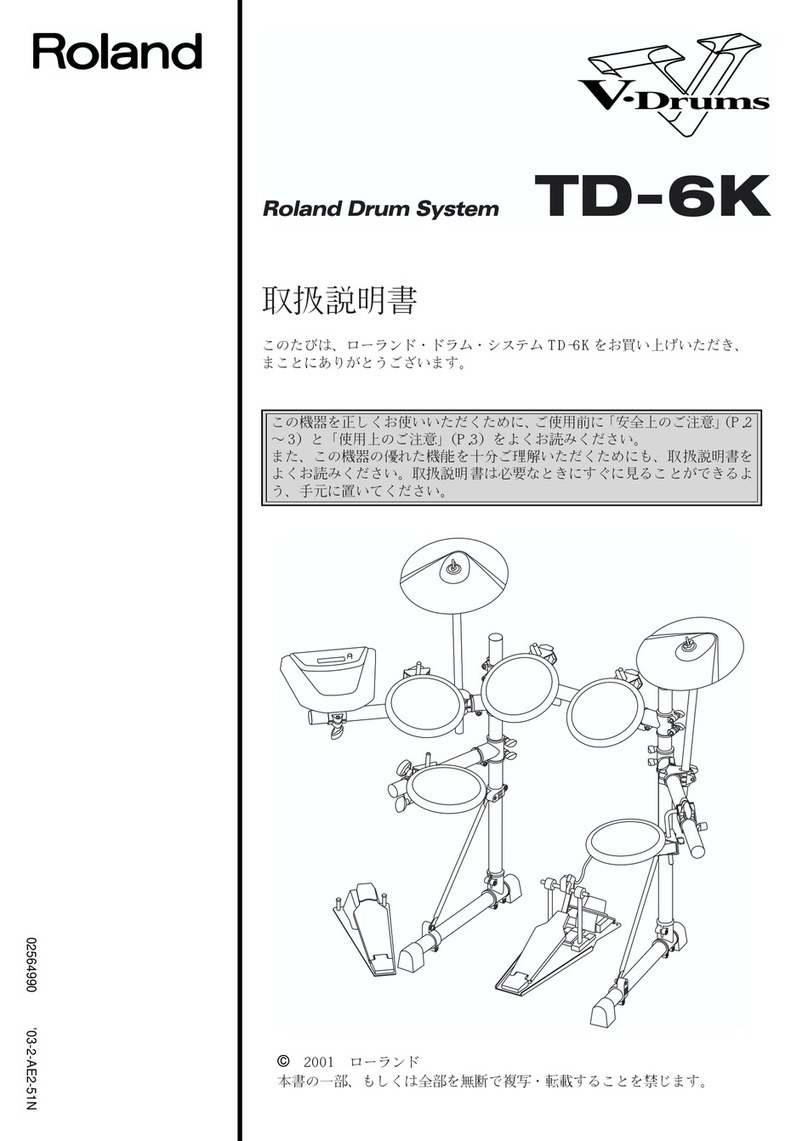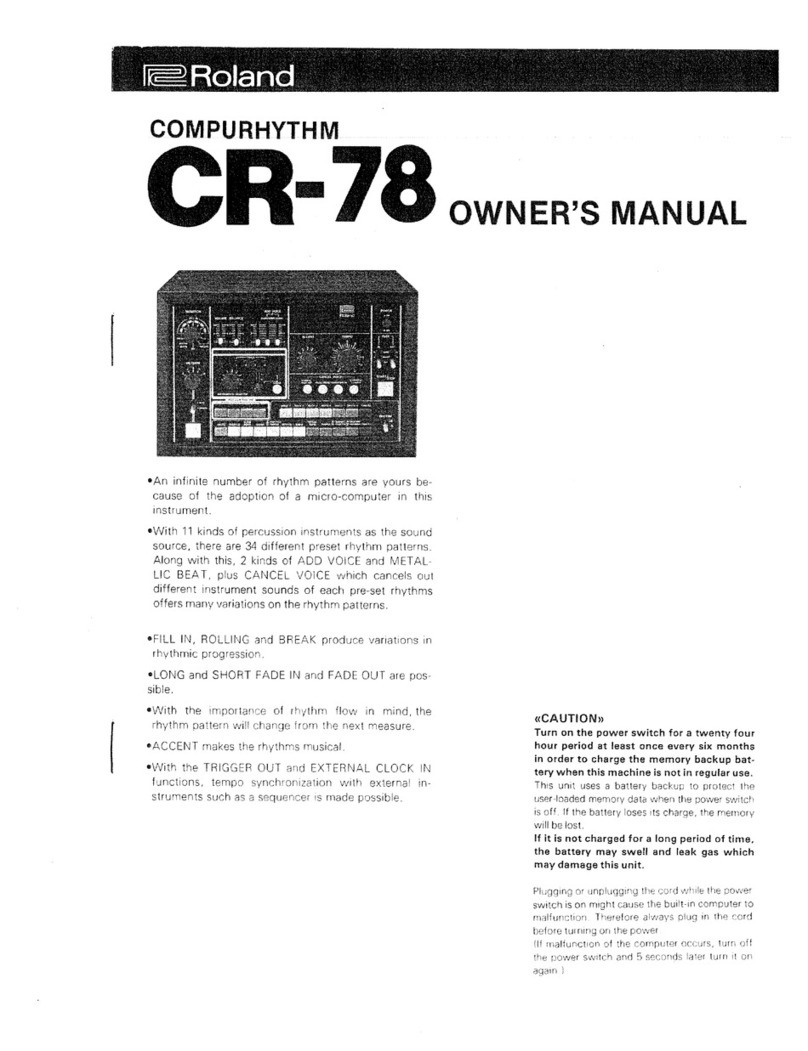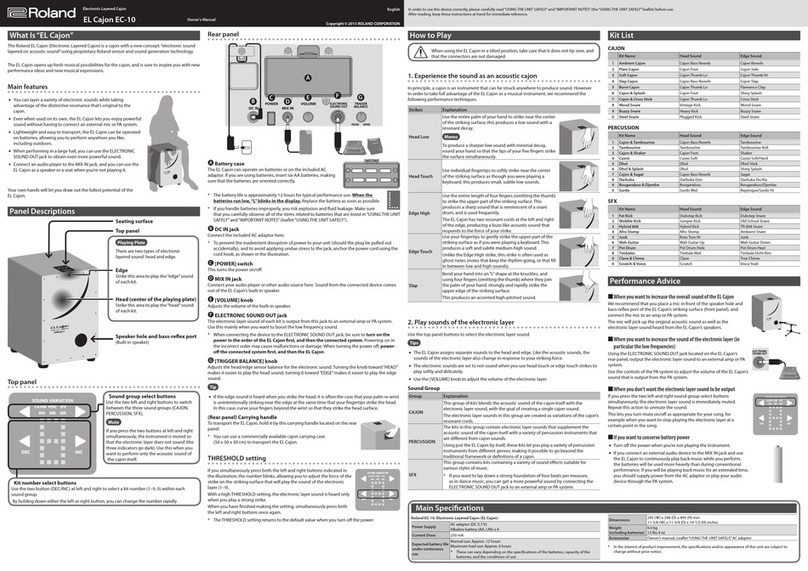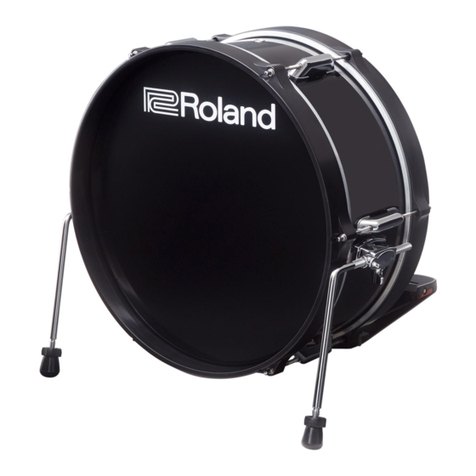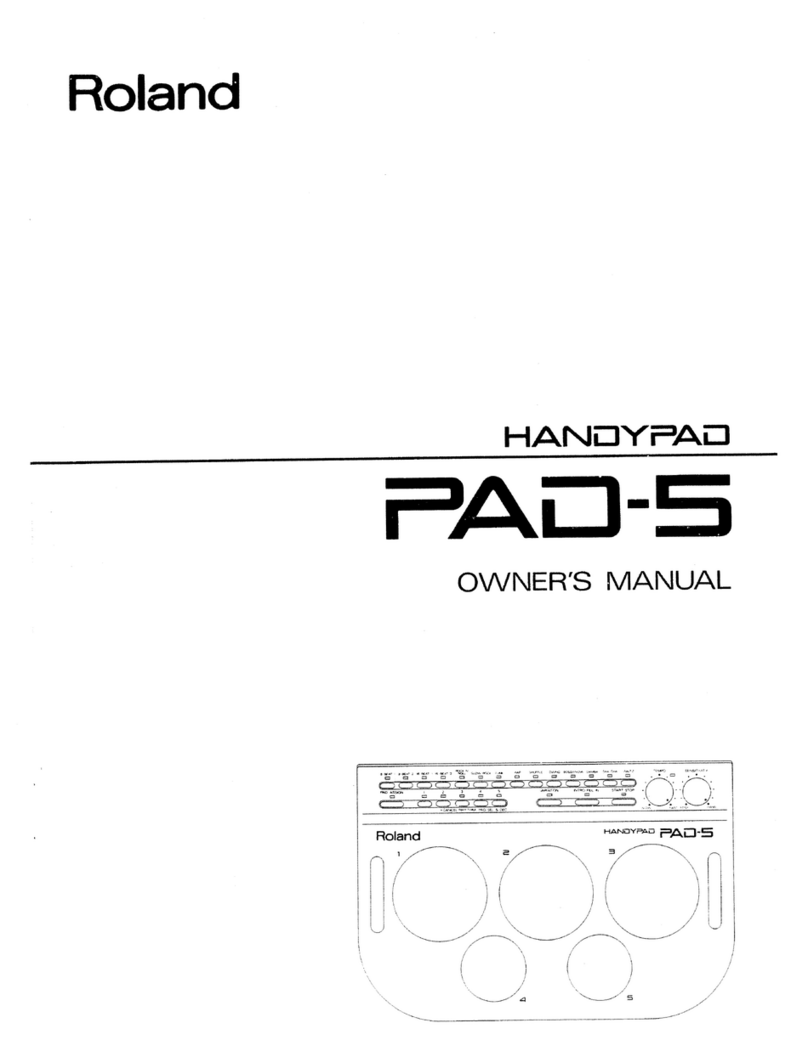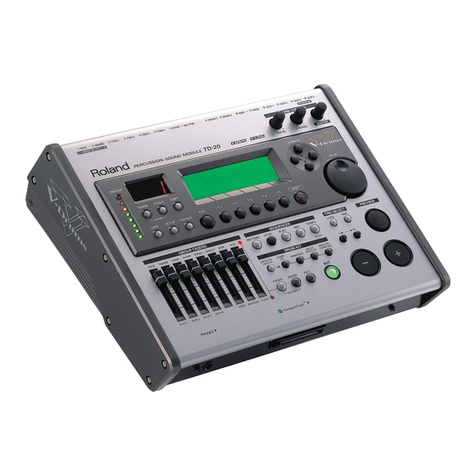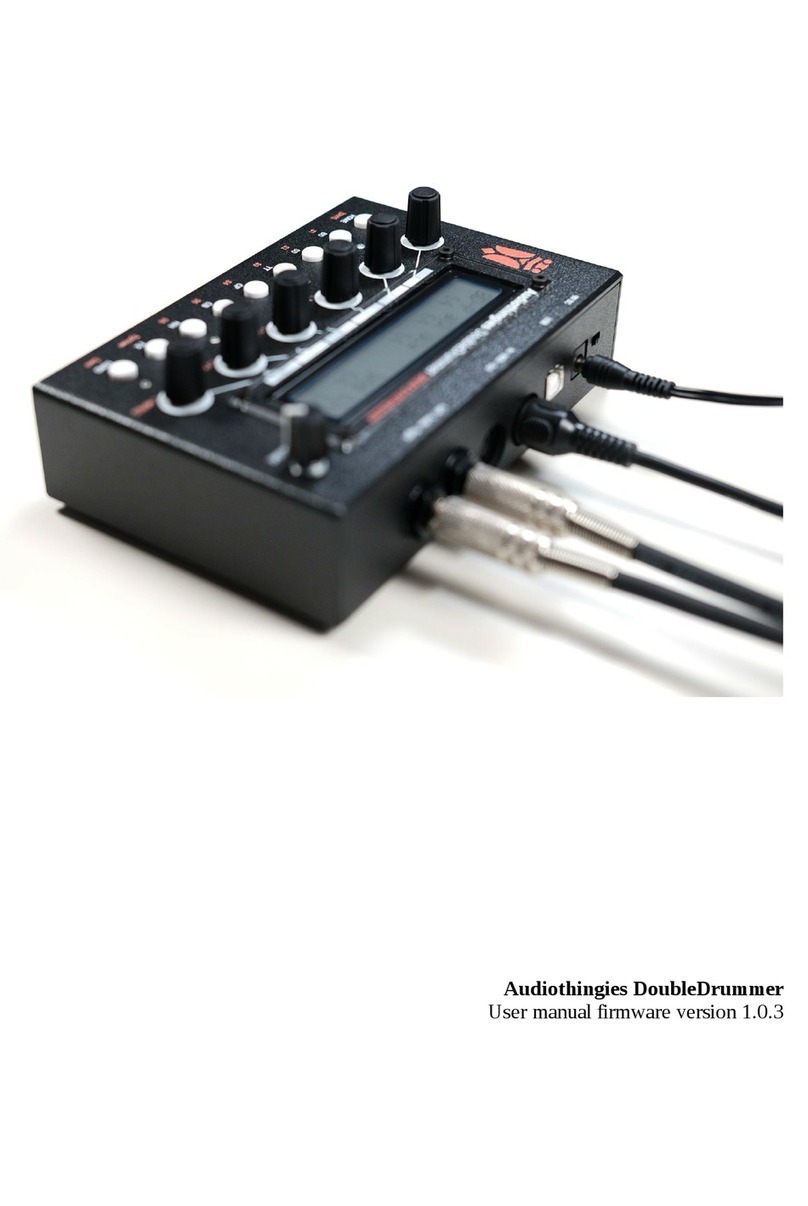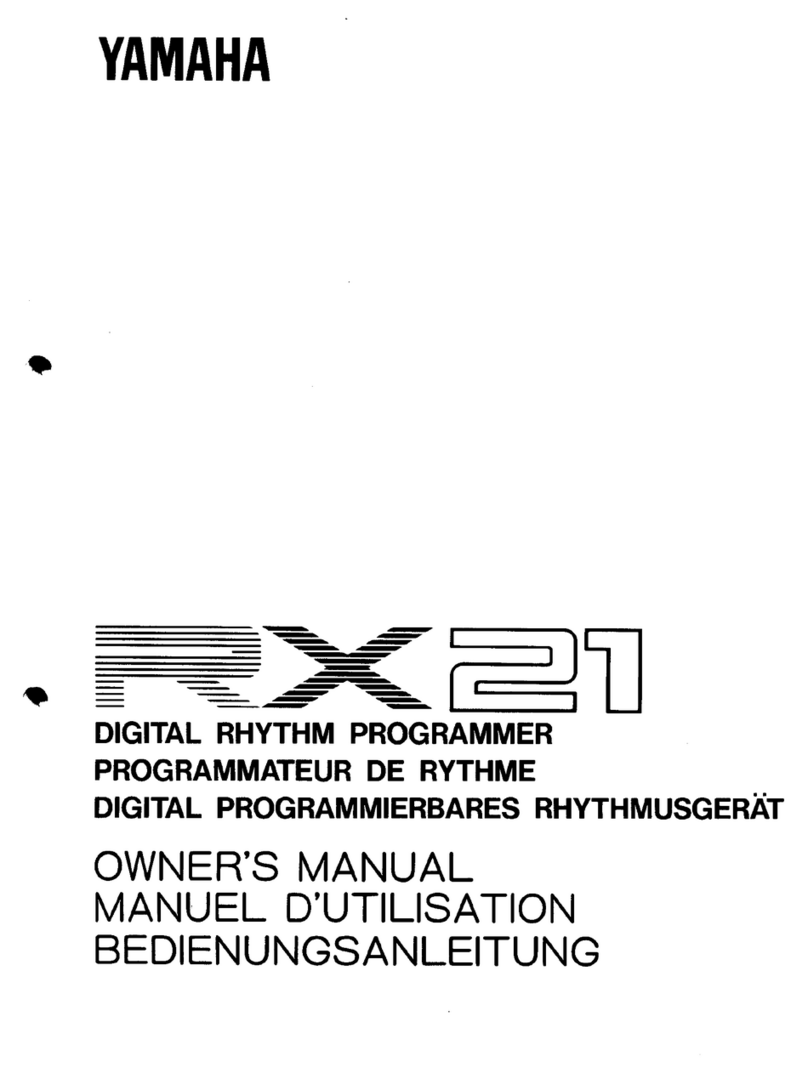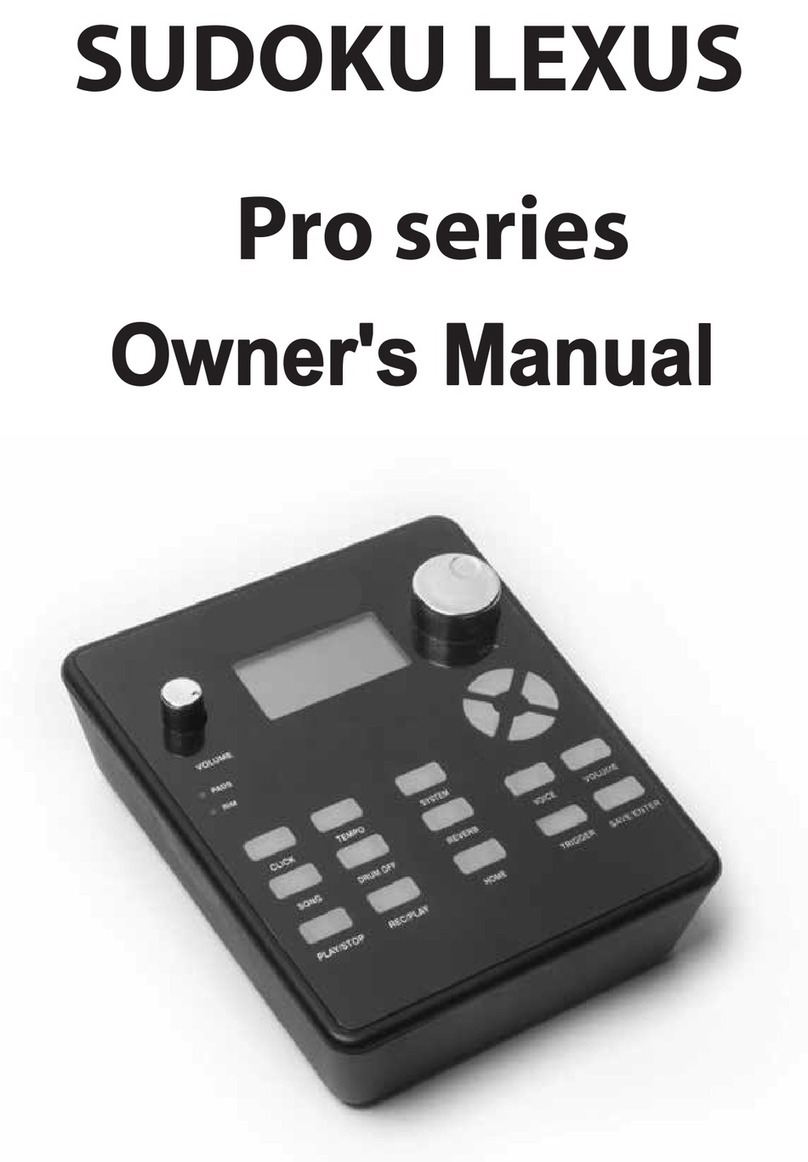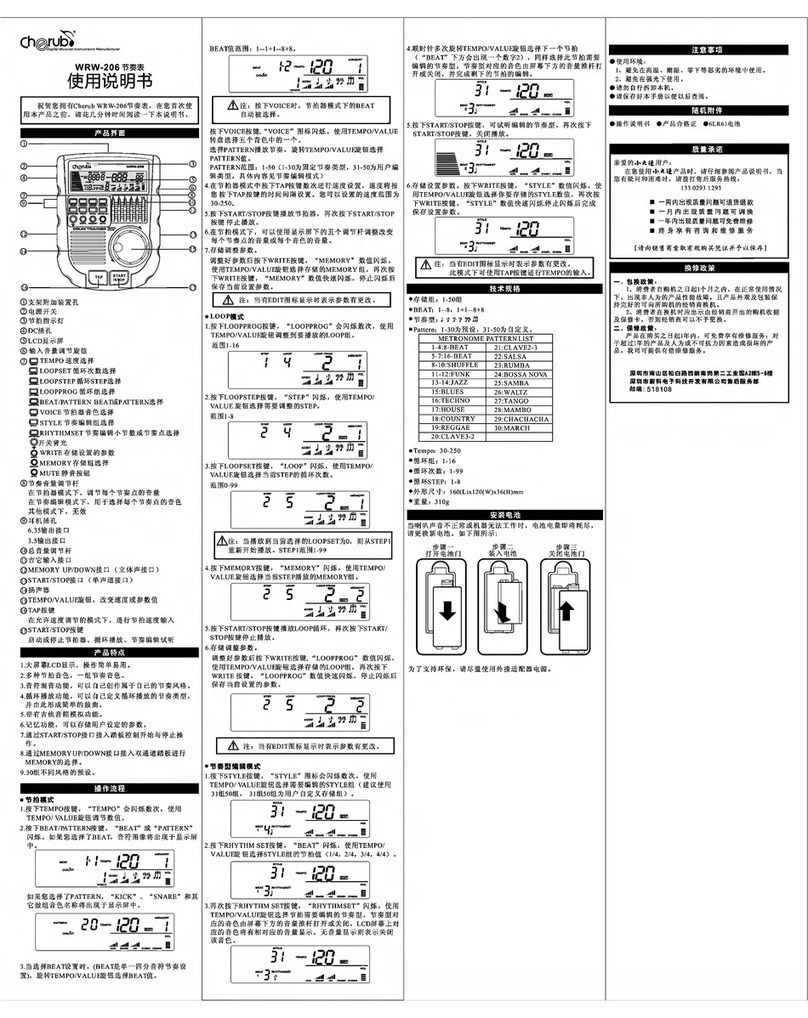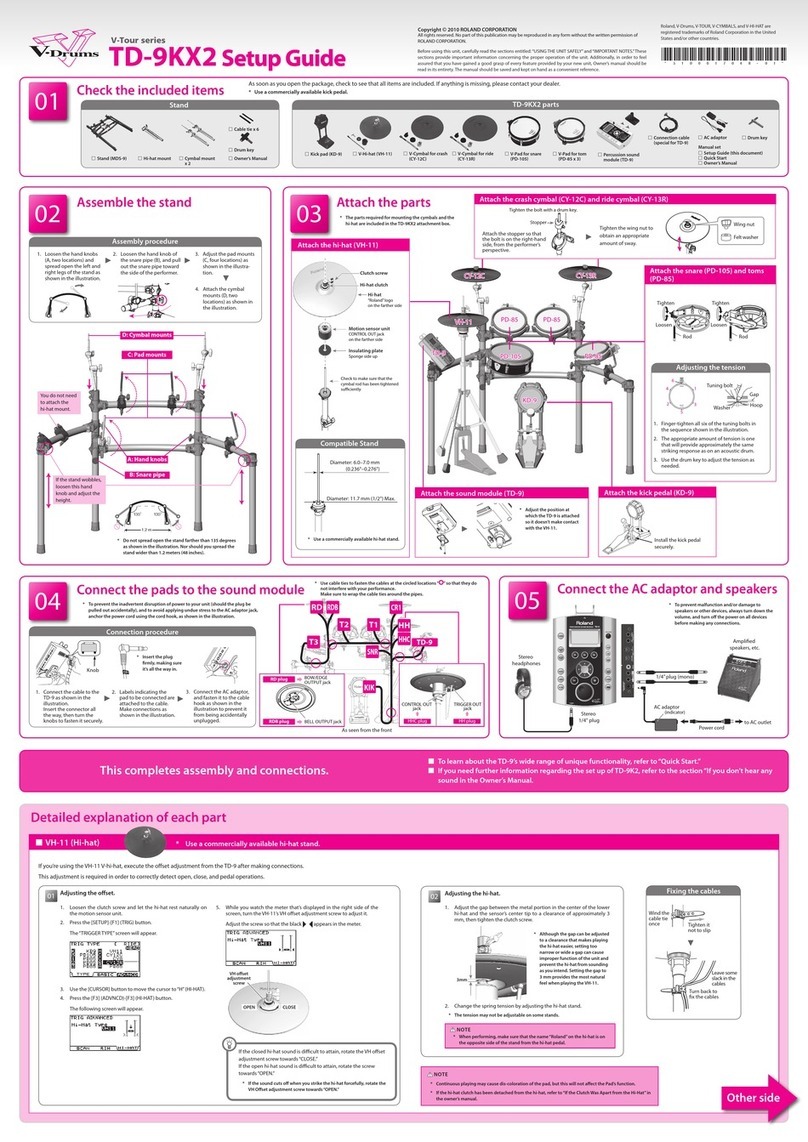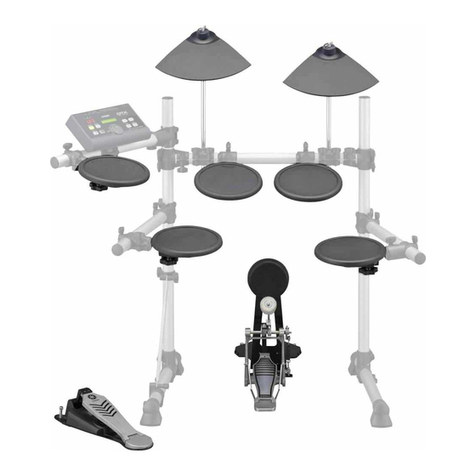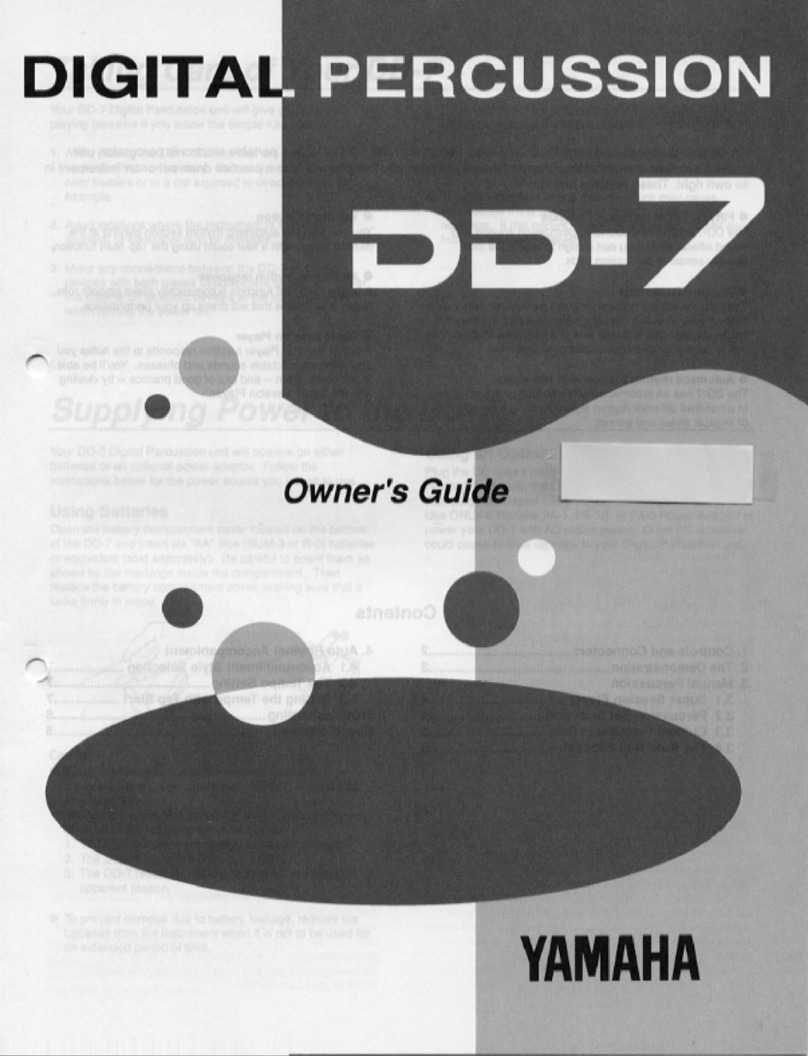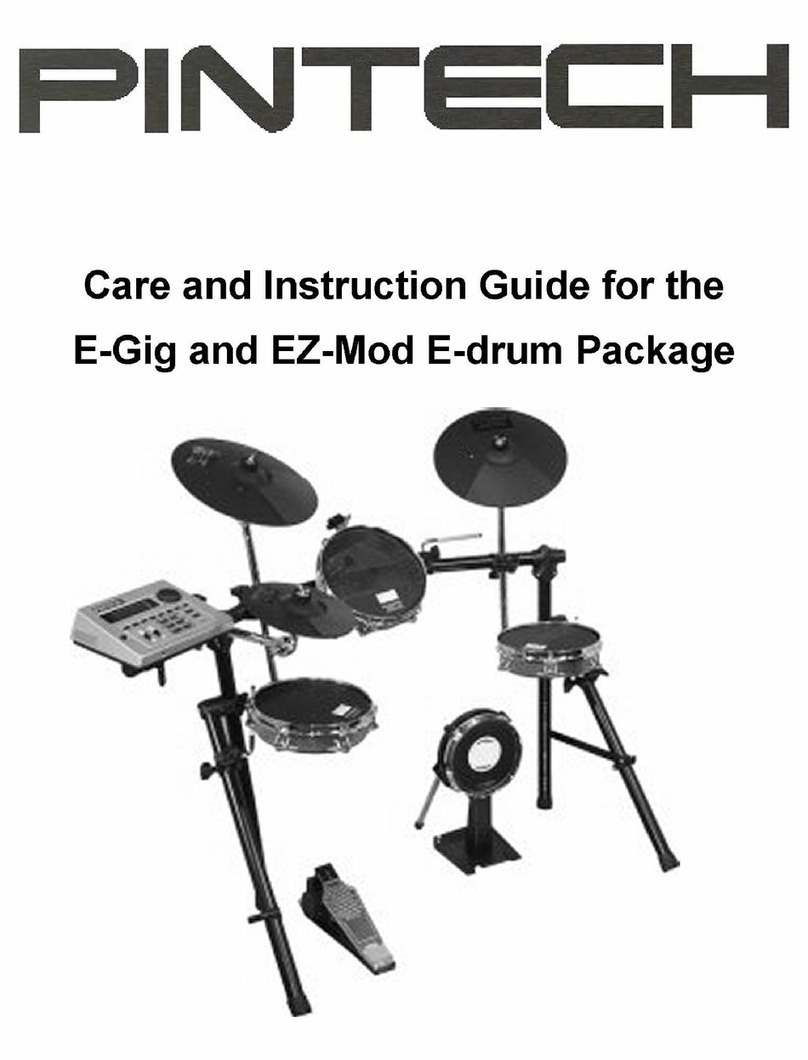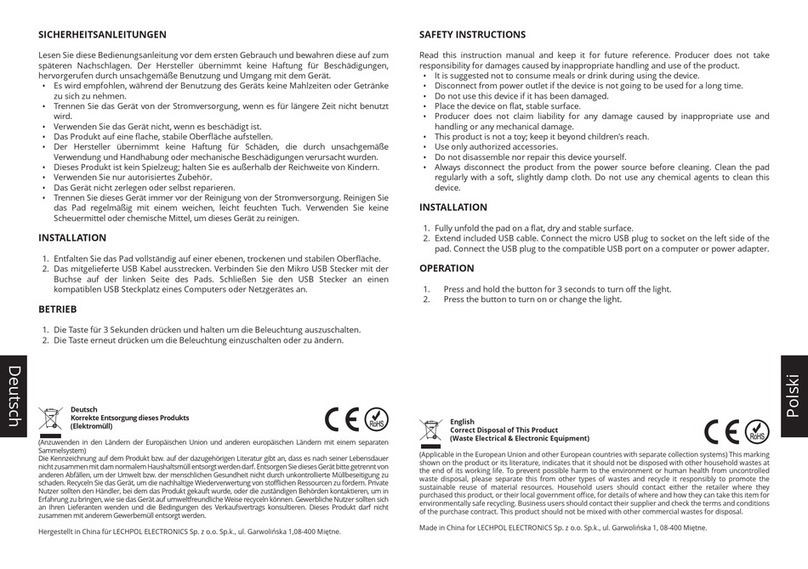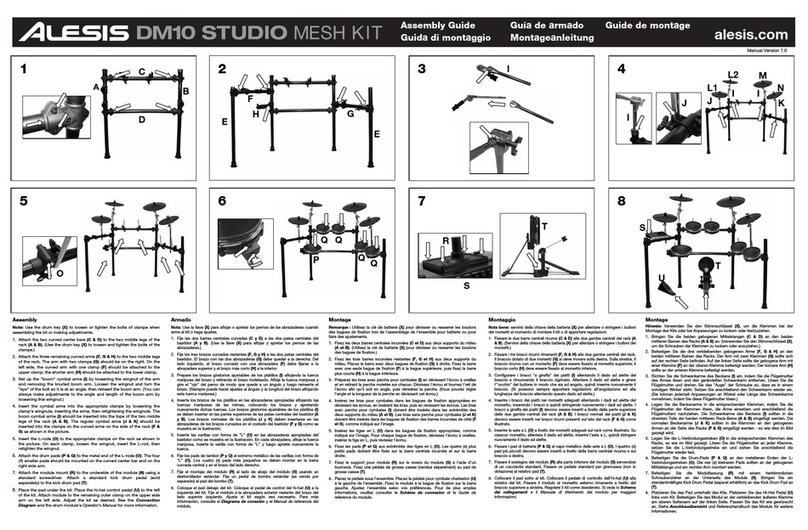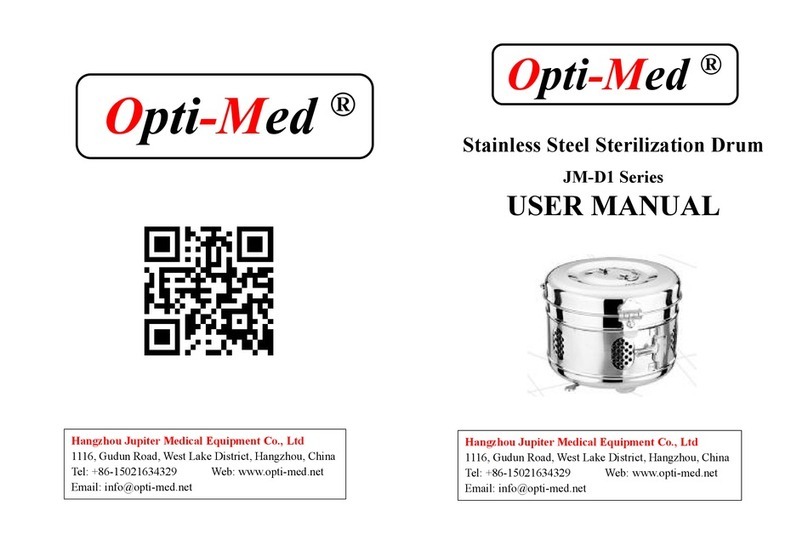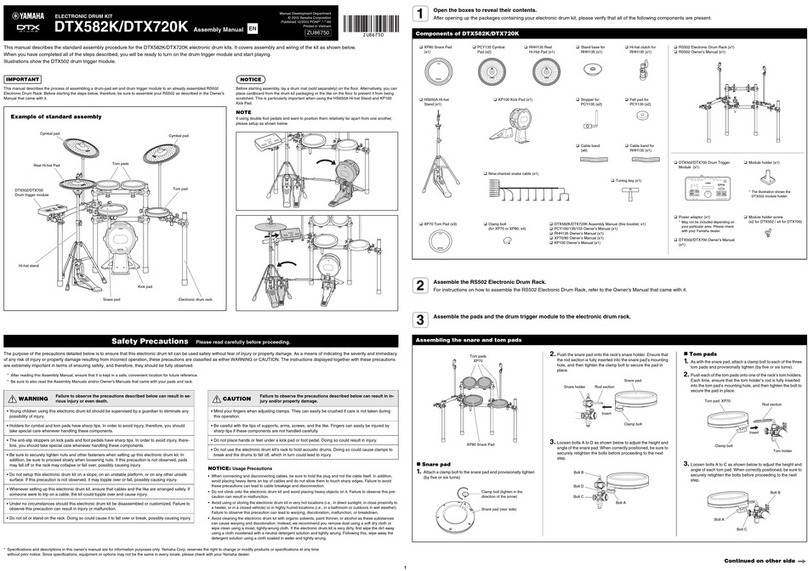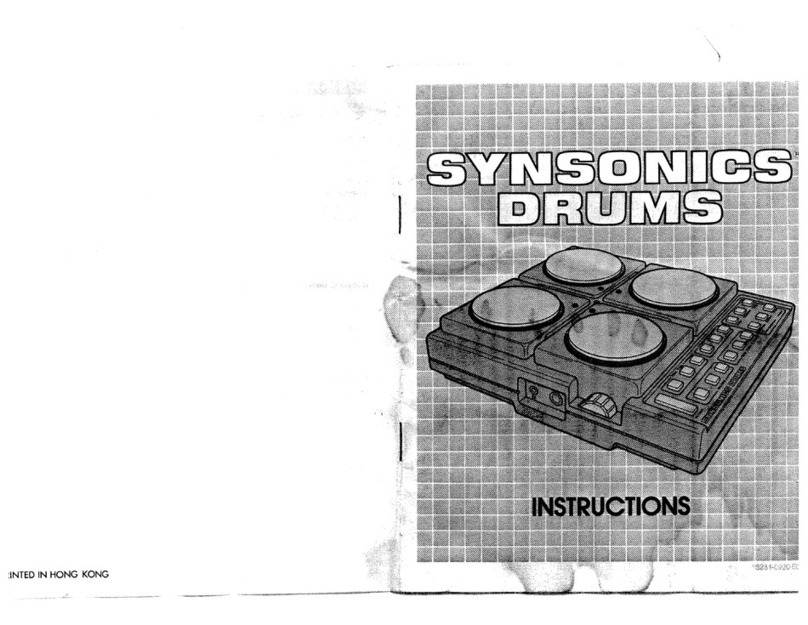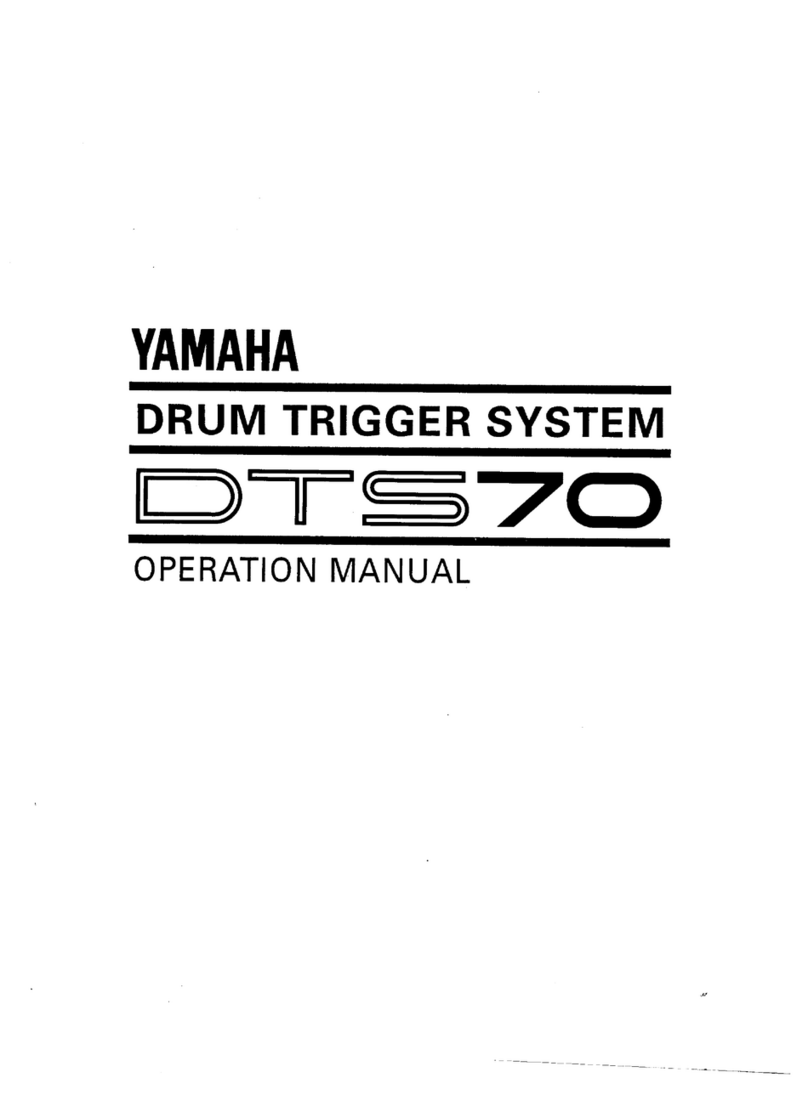WARNING
Do not disassemble or modify by yourself
Do not carry out anything unless you
are instructed to do so in the owner’s
manual. Otherwise, you risk causing
malfunction.
Do not repair or replace parts by yourself
Be sure to contact your dealer, a
Roland service center, or an ocial
Roland dealer.
For a list of Roland service centers
and ocial Roland dealers, refer to the Roland
website.
Do not use or store in the following types of
locations
• Subject to temperature extremes
(e.g., direct sunlight in an enclosed
vehicle, near a heating duct, on top
of heat-generating equipment); or
are
• Damp (e.g., baths, washrooms, on
wet oors); or are
• Exposed to steam or smoke; or are
• Subject to salt exposure; or are
• Exposed to rain; or are
• Dusty or sandy; or are
• Subject to high levels of vibration and
shakiness; or are
• Placed in a poorly ventilated location.
Do not place in an unstable location
Otherwise, you risk injury as the result
of the unit toppling over or dropping
down.
Be cautious to protect children from injury
Always make sure that an adult is
on hand to provide supervision and
guidance when using the unit in
places where children are present, or
when a child will be using the unit.
Do not drop or subject to strong impact
Otherwise, you risk causing damage or
malfunction.
CAUTION
Avoid climbing on top of the unit, or placing
heavy objects on it
Otherwise, you risk injury as the result
of the unit toppling over or dropping
down.
Take care so as not to get ngers pinched
When setting up or disassembling the
pedal, be careful not to pinch your
ngers.
• Footboard
Keep small items out of the reach of children
To prevent accidental ingestion of the
parts listed below, always keep them
out of the reach of small children.
• Removable Parts
Screws
Spring Parts
Knobs
Bolts
Nuts
• The bottom of the pedal plate has rubber
protrusions that absorb vibration. Although
the stand might sway during performance,
this is not a malfunction.
USING THE UNIT SAFELY IMPORTANT NOTES
Placement
• Depending on the material and temperature
of the surface on which you place the unit, its
rubber feet may discolor or mar the surface.
Maintenance
• Never use benzine, thinners, alcohol or
solvents of any kind, to avoid the possibility of
discoloration and/or deformation.
Additional Precautions
• This instrument is designed to minimize
the extraneous sounds produced when it’s
played. However, since sound vibrations can
be transmitted through oors and walls to a
greater degree than expected, take care not
to allow these sounds to become a nuisance
others nearby.
• When disposing of the packing carton or
cushioning material in which this unit was
packed, you must observe the waste disposal
regulations that apply to your locality.
Intellectual Property Right
• Roland and Noise Eater are either registered
trademarks or trademarks of Roland
Corporation in the United States and/or other
countries.
5. Adjusting the pedal (left/right) separation
5–1. Adjust the length of the connector pipe as appropriate for your drum setup.
Loosen the connector pipe length adjustment bolts (four locations), adjust the
length, and then retighten the length adjustment bolts.
6. Adjusting the beater angle
6–1. Loosen the beater angle adjustment bolt(s) (one location on the RDH-100,
two locations on the RDH-102).
6–2. While using one hand to hold the beater, tighten the beater angle
adjustment bolt(s).
* The illustration below shows the RDH-102. If you are using the RDH-100, there
is one beater.
7. Adjusting the foot board angle
7–1. Using the drum key with hex wrench, loosen the foot board angle
adjustment bolt.
7–2. Adjust the amount of chain wrap. Wrapping the chain toward yourself
increases the foot board angle.
7–3. When you have specied the angle, tighten the foot board angle
adjustment bolt to secure it.
8. Adjusting the pedal tension
8–1. Rotate the upper nut counter-clockwise, moving it upward.
To increase the tension (making the pedal harder to press)
8–2. While pressing the upper nut down, turn the lower nut counter-clockwise to
tighten it.
To decrease the tension (making the pedal easier to press)
8–2. While pressing the upper nut down, turn the lower nut clockwise to loosen it.
8–3. Retighten the upper nut so that it reaches the lowest position.
Main Specications
Drive System Double Chain
Beater Plastic
Weight RDH-100: 2.85 Kg, 6 lbs 5 oz
RDH-102: 6.25 Kg, 13 lbs 13 oz
Accessories
Kick Pad Cushion
Drum Key with Hex Wrench
Owner’s Manual
* This document explains the specications of the product at the time that the
document was issued. For the latest information, refer to the Roland website.
Used for instructions intended to alert the
user to the risk of injury or material
damage should the unit be used
improperly.
* Material damage refers to damage or
other adverse effects caused with
respect to the home and all its
furnishings, as well to domestic animals
or pets.
Used for instructions intended to alert the
user to the risk of death or severe injury
should the unit be used improperly.
The symbol alerts the user to things that must be
carried out.The specific thing that must be done is
indicated by the design contained within the circle. In the
case of the symbol at left, it means that the power-cord
plug must be unplugged from the outlet.
The symbol alerts the user to important instructions or
warnings.The specific meaning of the symbol is
determined by the design contained within the triangle. In
the case of the symbol at left, it is used for general
cautions, warnings, or alerts to danger.
The symbol alerts the user to items that must never be
carried out (are forbidden).The specific thing that must
not be done is indicated by the design contained within
the circle. In the case of the symbol at left, it means that
the unit must never be disassembled.
About WARNING and CAUTION Notices About the Symbols
ALWAYS OBSERVE THE FOLLOWING
When you need repair service, access this URL and nd your nearest Roland Service Center or
authorized Roland distributor in your country.
http://roland.cm/service

